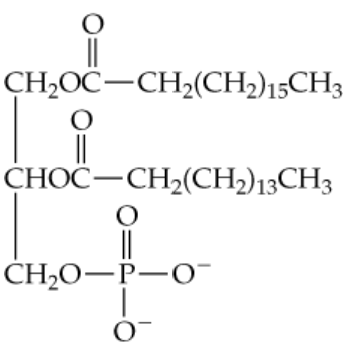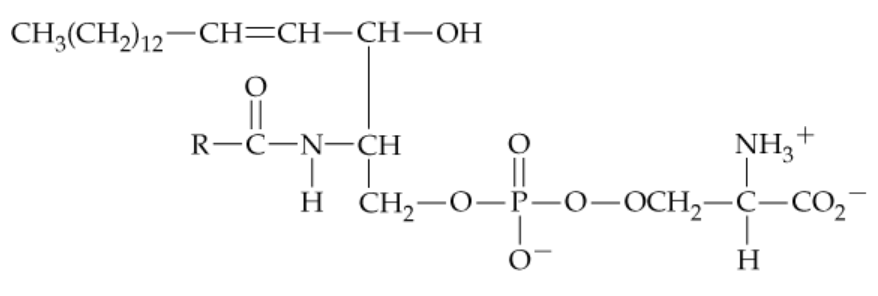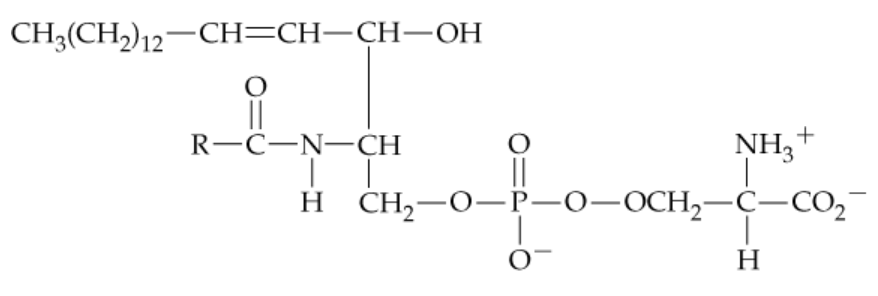 Back
BackProblem 1b
Use Figure 23.1 to identify the family of lipids to which each of these molecules belongs.
b.
Problem 2
One of the constituents of the carnauba wax used in floor and furniture polish is an ester of a 32-carbon straight-chain alcohol with a C20:0 straight-chain carboxylic acid. Draw the structure of this ester. (Use subscripts to show the numbers of connected CH2 groups.)
Problem 5
Draw the complete structural formula of arachidonic acid (Table 23.1) in a way that shows the cis stereochemistry of its four double bonds.
Problem 6
Can there be any chiral carbon atoms in triacylglycerols? If so, which ones can be chiral and what determines their chirality?
Problem 8
Write an equation for the complete hydrogenation of triolein, the triacylglycerol with three oleic acid acyl groups for which you drew the structure in Problem 23.3. Name the fatty acid from which the resulting acyl groups are derived.
Problem 11
Write the complete equation for the hydrolysis of a triacylglycerol in which the fatty acids are two molecules of stearic acid and one of oleic acid.
Problem 13a
Identify the products formed by complete hydrolysis of all ester bonds in (a) the phosphatidylcholine on page 726.
Problem 13b
Identify the products formed by complete hydrolysis of all ester bonds in (b) the sphingomyelin in Figure 23.5.
Problem 14
Draw the structure of the sphingomyelin that contains a myristic acid acyl group. Identify the hydrophilic head group and the hydrophobic tails in this molecule.
Problem 15
Draw the structure of the glycerophospholipid that contains a stearic acid acyl group, an oleic acid acyl group, and a phosphate bonded to ethanolamine.
Problem 16a
Which of the following terms apply to the compound shown below? (Hint: Look at the functional groups and the bonds involved to begin analyzing the compound part by part in comparison to the lipids discussed in this chapter.)
a. A phospholipid
Problem 16e
Which of the following terms apply to the compound shown below? (Hint: Look at the functional groups and the bonds involved to begin analyzing the compound part by part in comparison to the lipids discussed in this chapter.)
e. A lipid



